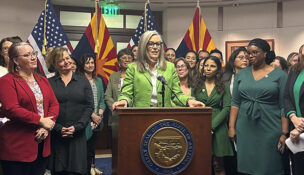States expand food stamp programs: Arizona ranks 10th in nation for meeting needs of hungry
Arizona Capitol Reports Staff//December 8, 2006//[read_meter]
States expand food stamp programs: Arizona ranks 10th in nation for meeting needs of hungry
Arizona Capitol Reports Staff//December 8, 2006//[read_meter]
In the war on hunger, a handful of states have made big strides in getting federally funded food stamps to more poor families, while others have lagged behind. Only 60...
No tags for this post.

















